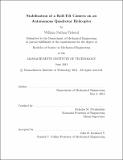| dc.contributor.advisor | Nicholas M. Patrikalakis. | en_US |
| dc.contributor.author | Pickeral, William Nathan | en_US |
| dc.contributor.other | Massachusetts Institute of Technology. Dept. of Mechanical Engineering. | en_US |
| dc.date.accessioned | 2012-01-30T15:21:46Z | |
| dc.date.available | 2012-01-30T15:21:46Z | |
| dc.date.copyright | 2011 | en_US |
| dc.date.issued | 2011 | en_US |
| dc.identifier.uri | http://hdl.handle.net/1721.1/68693 | |
| dc.description | Thesis (S.B.)--Massachusetts Institute of Technology, Dept. of Mechanical Engineering, 2011. | en_US |
| dc.description | This electronic version was submitted by the student author. The certified thesis is available in the Institute Archives and Special Collections. | en_US |
| dc.description | Cataloged from student submitted PDF version of thesis. | en_US |
| dc.description | Includes bibliographical references (p. 47). | en_US |
| dc.description.abstract | Harmful algal blooms are becoming an increasingly difficult problem to deal with, particularly in Singapore. The Center for Environmental Sensing and Modeling (CENSAM) has developed a network of autonomous vehicles to nd blooms when they occur. The problem is that finding blooms, which are often transient in nature, can be difficult, particularly with slow-moving underwater and surface vehicles. Autonomous "quadrotor" helicopters are being utilized to visually survey large areas to spot these blooms while they are occurring. Here we develop a model for implement- ing servo motor controlled camera stabilization on these autonomous vehicles. The need for camera stabilization arises because video footage is monitored continuously while the onboard GPS is controlling the motion of the quadrotor. The operator of the quadrotor may not want to look in the direction that the GPS controller would like to guide the vehicle. We explore implementing a system that gives the operator the ability to control the camera, yet maintain the autonomous nature of the quadrotor. We develop two models for the rotations involved in stabilizing the position and orientation of the camera against the motion of the vehicle it is mounted on. We use these models to investigate the limitations this type of active stabilization would im- pose on our quadrotor and GPS controller, and discuss the next steps in integrating it into our system. | en_US |
| dc.description.statementofresponsibility | by William Nathan Pickeral. | en_US |
| dc.format.extent | 60 p. | en_US |
| dc.language.iso | eng | en_US |
| dc.publisher | Massachusetts Institute of Technology | en_US |
| dc.rights | M.I.T. theses are protected by
copyright. They may be viewed from this source for any purpose, but
reproduction or distribution in any format is prohibited without written
permission. See provided URL for inquiries about permission. | en_US |
| dc.rights.uri | http://dspace.mit.edu/handle/1721.1/7582 | en_US |
| dc.subject | Mechanical Engineering. | en_US |
| dc.title | Stabilization of a roll-tilt camera on an autonomous quadrotor helicopter | en_US |
| dc.type | Thesis | en_US |
| dc.description.degree | S.B. | en_US |
| dc.contributor.department | Massachusetts Institute of Technology. Department of Mechanical Engineering | |
| dc.identifier.oclc | 772627396 | en_US |
